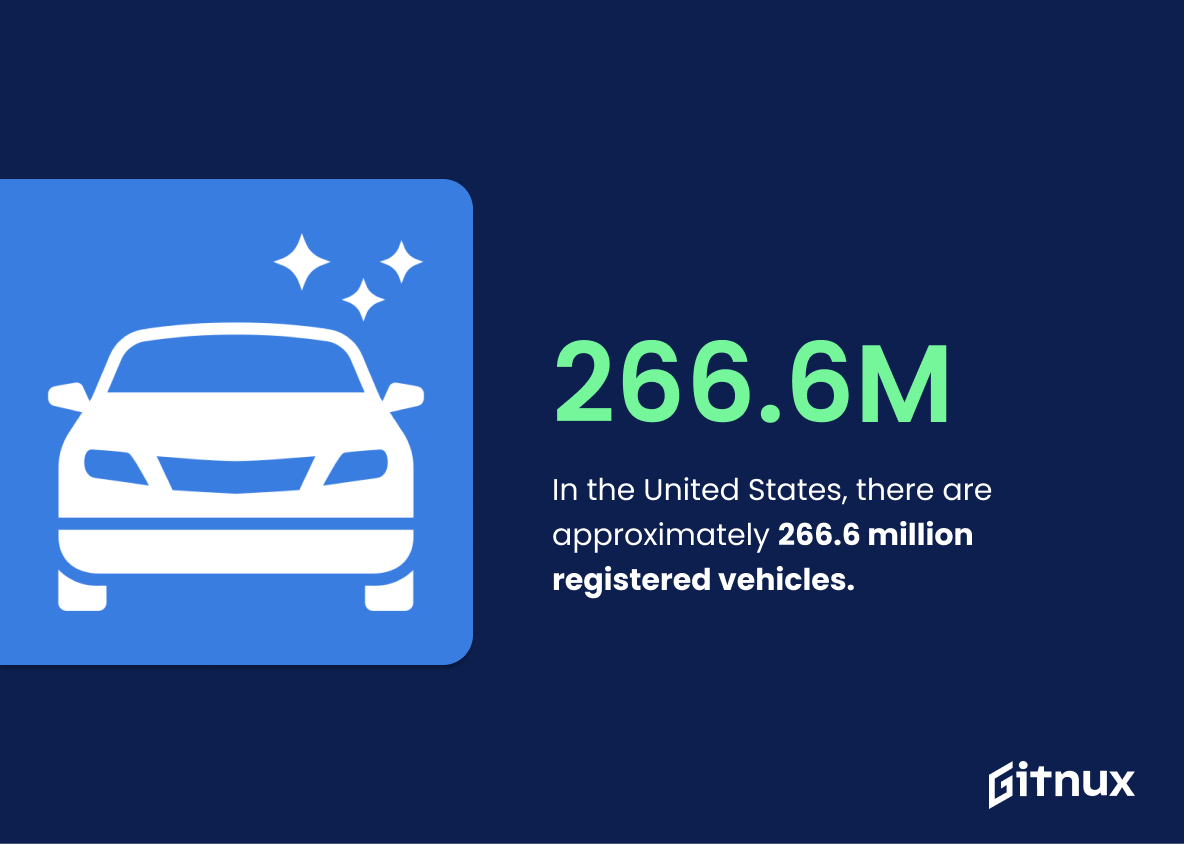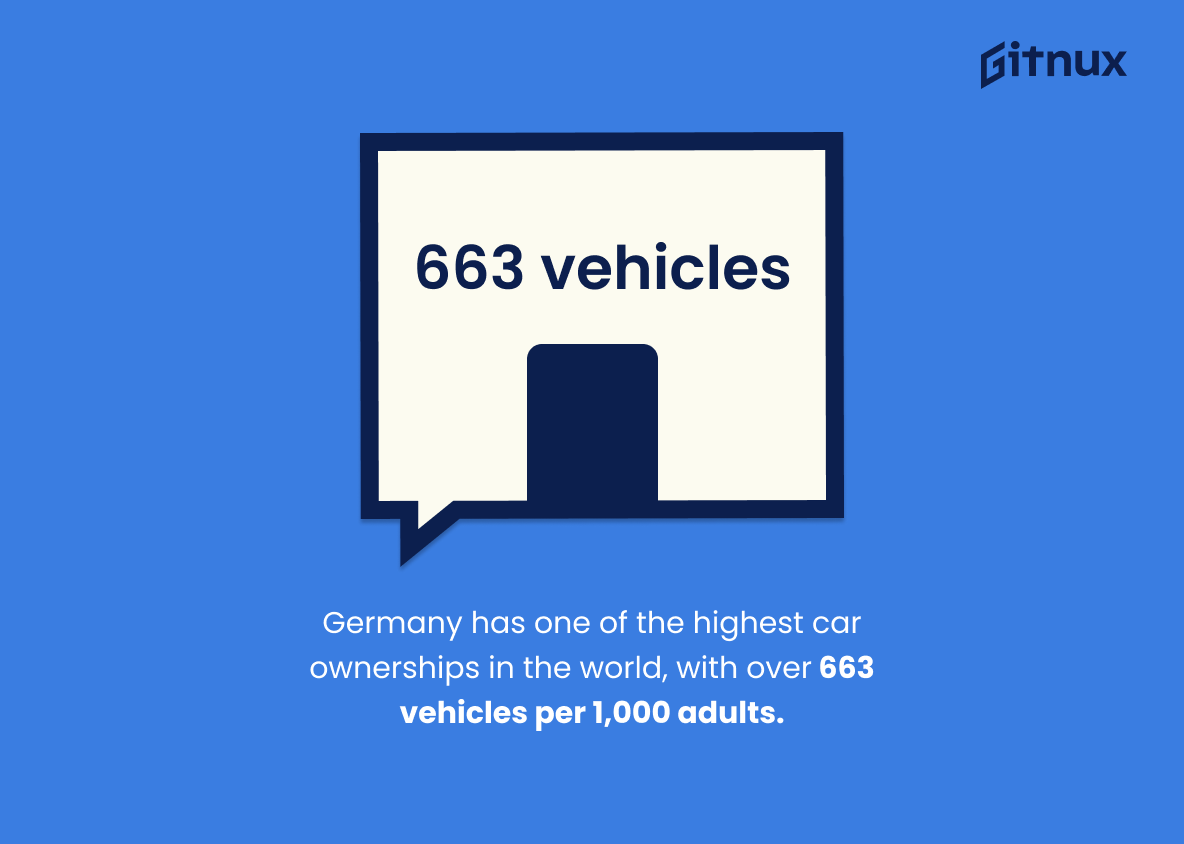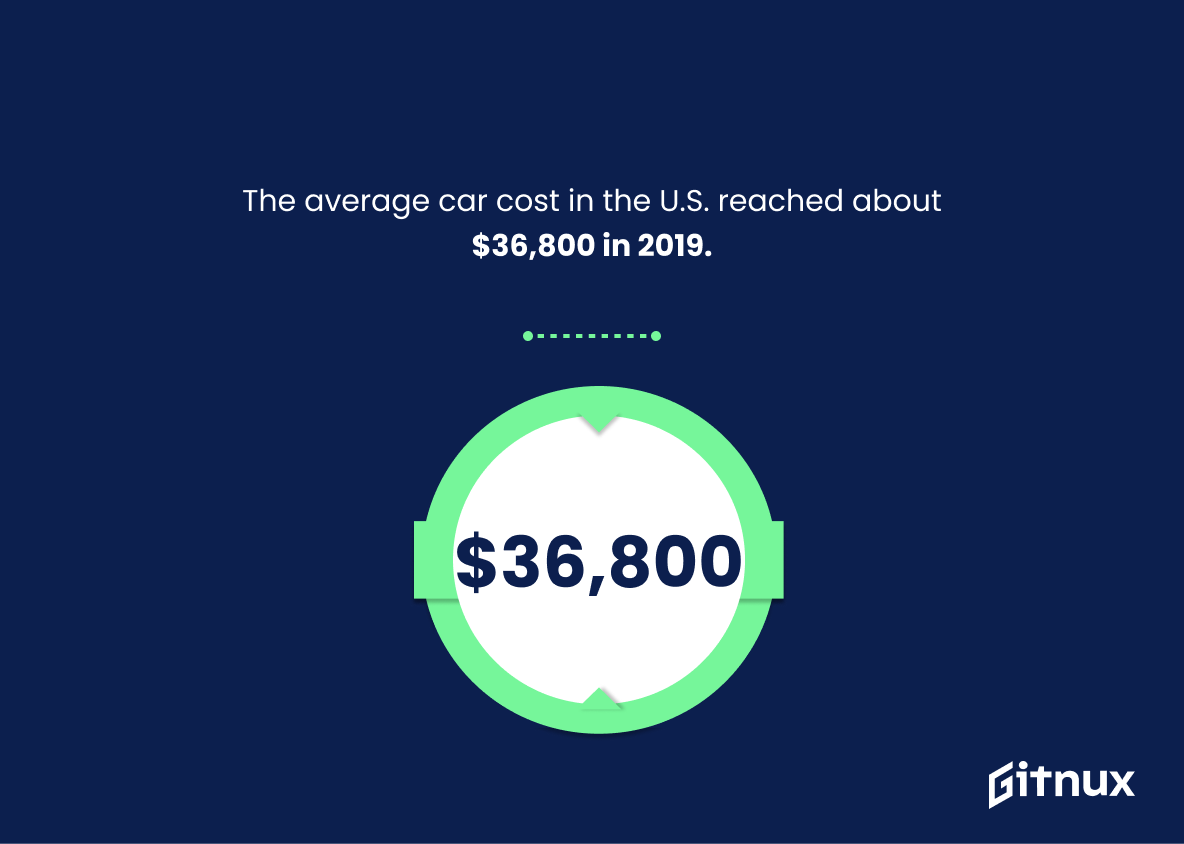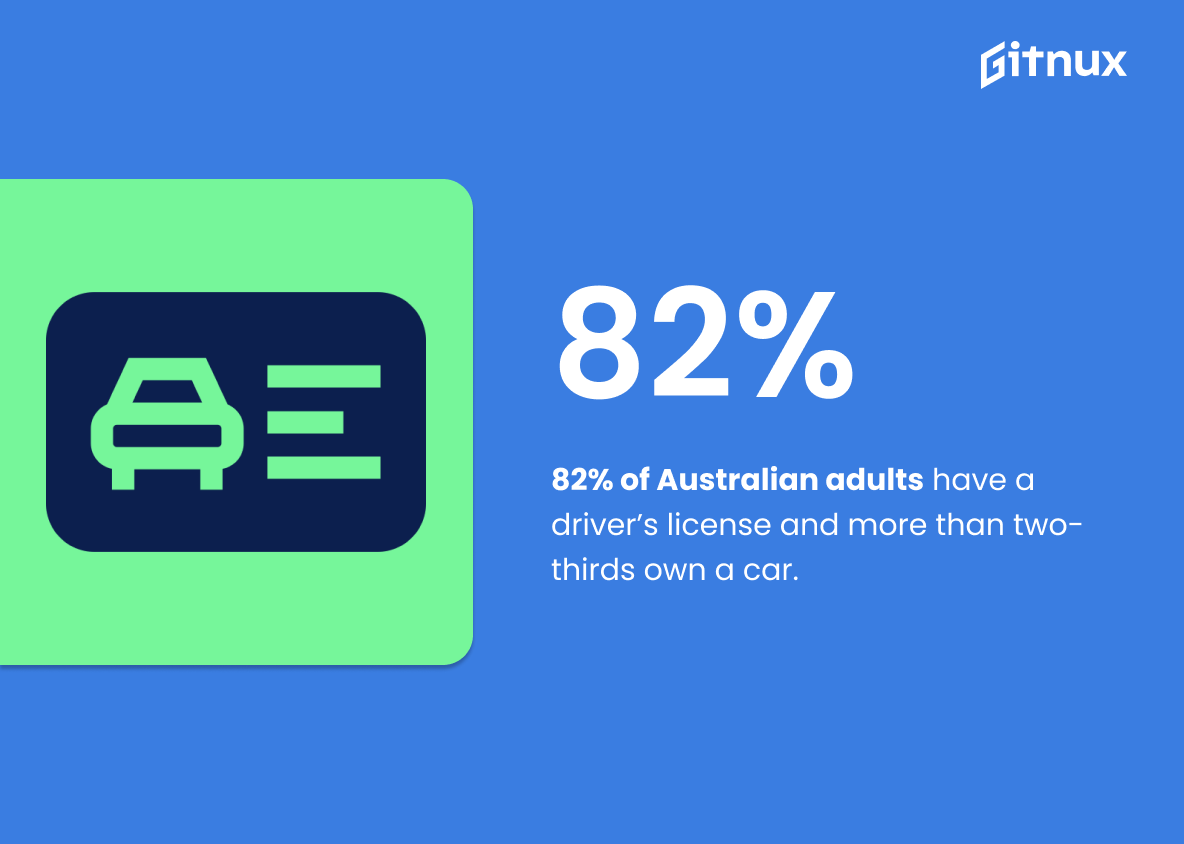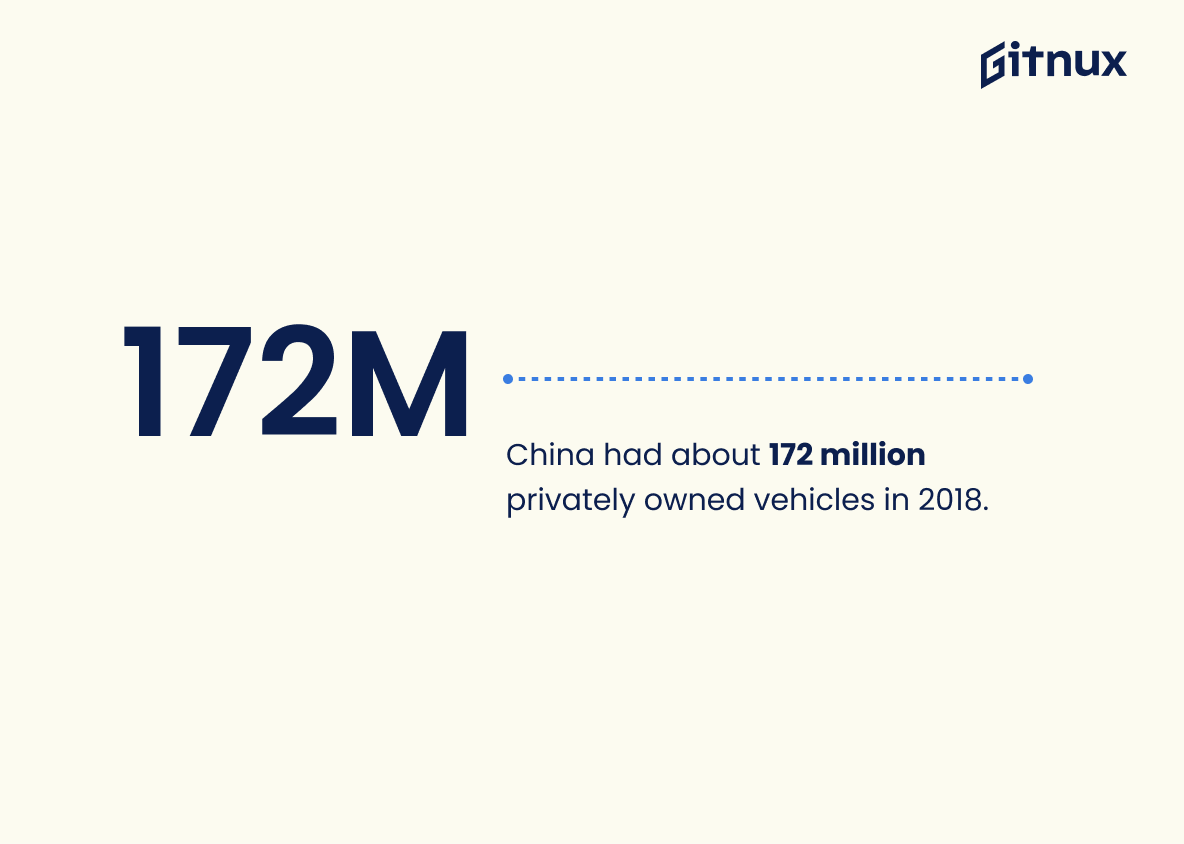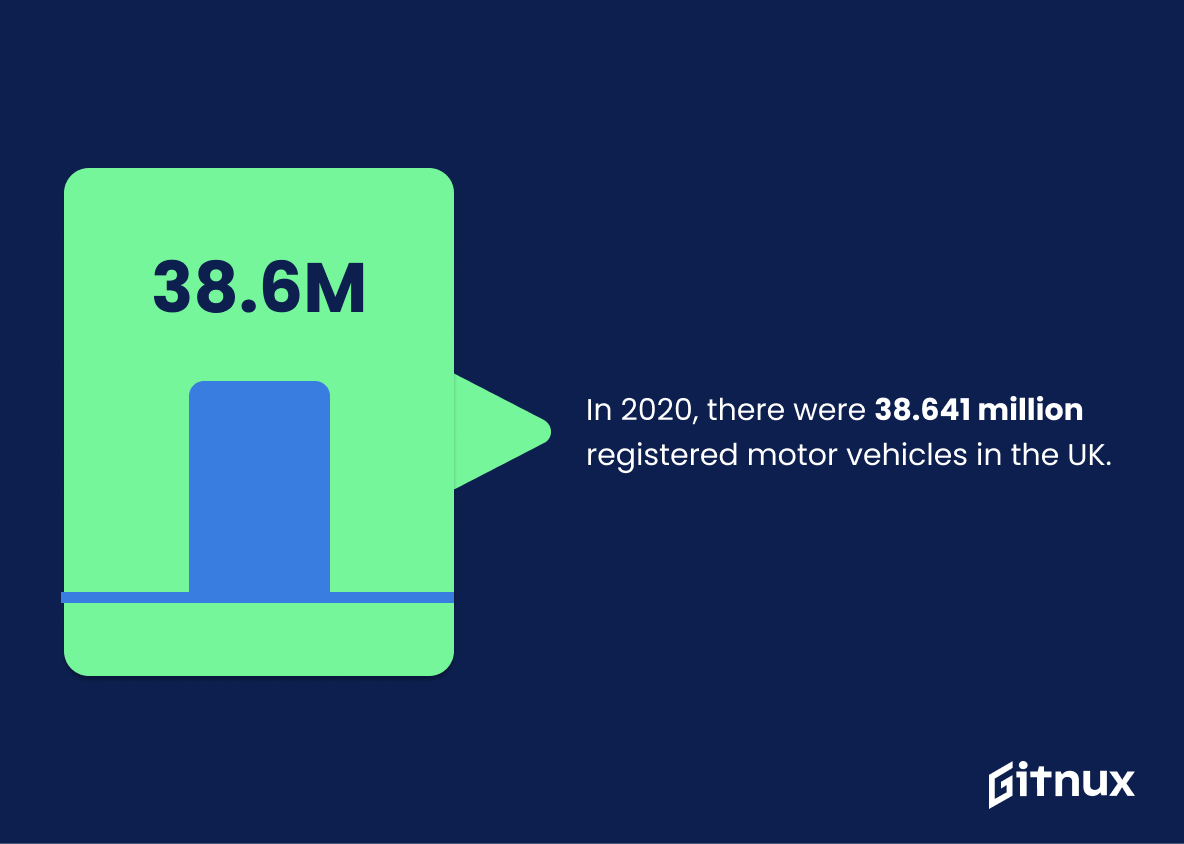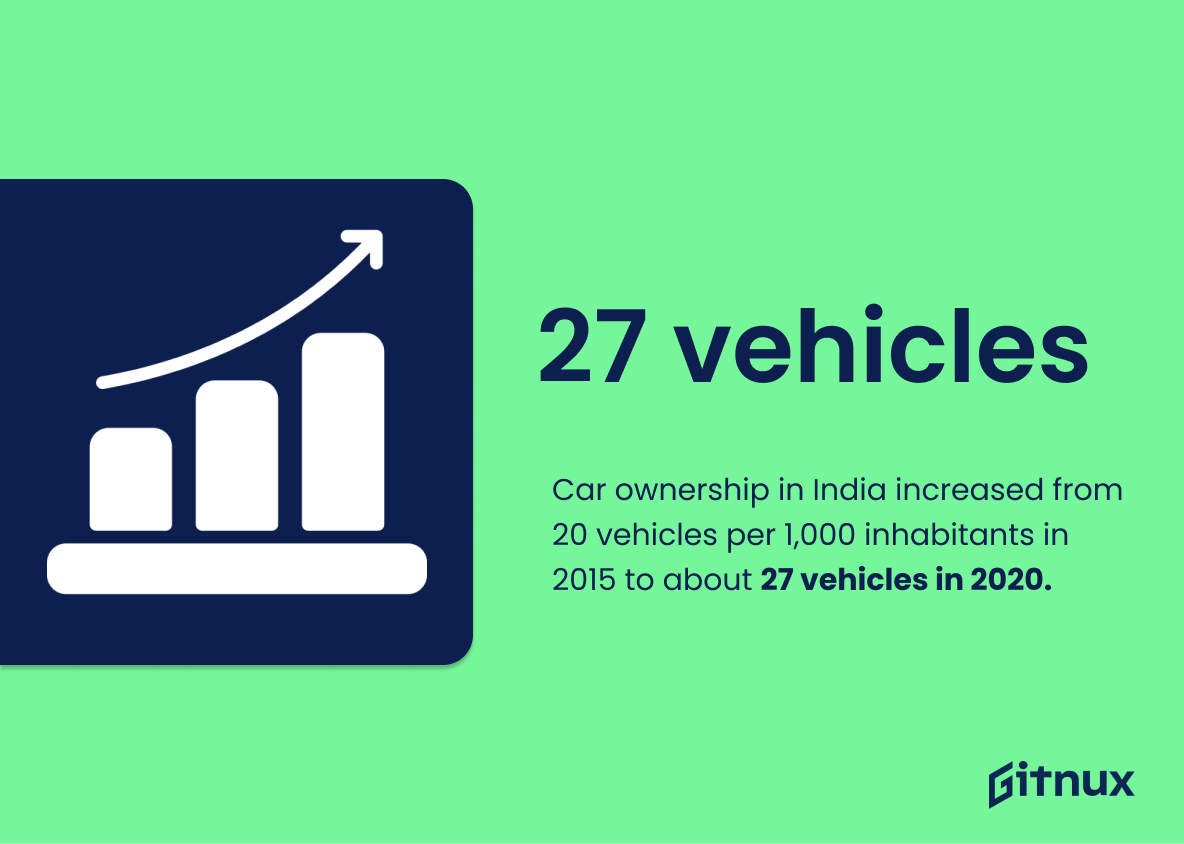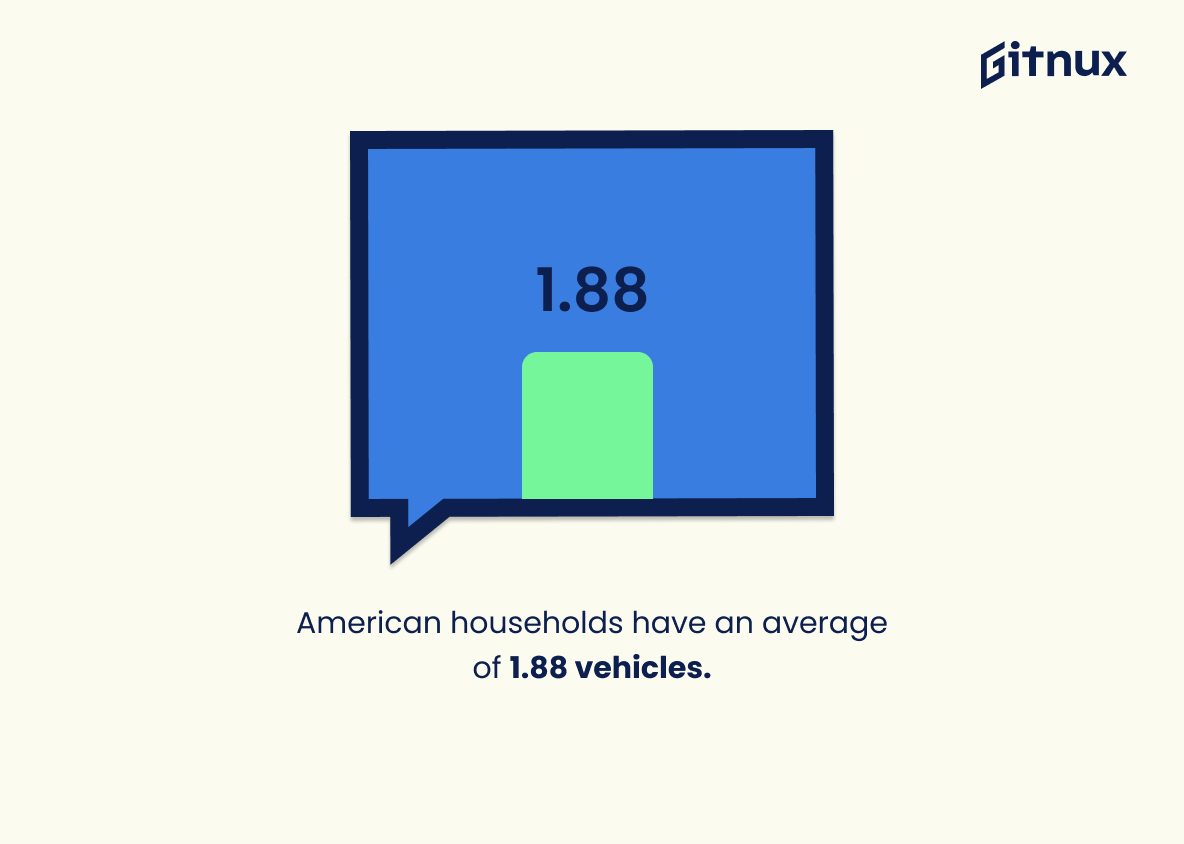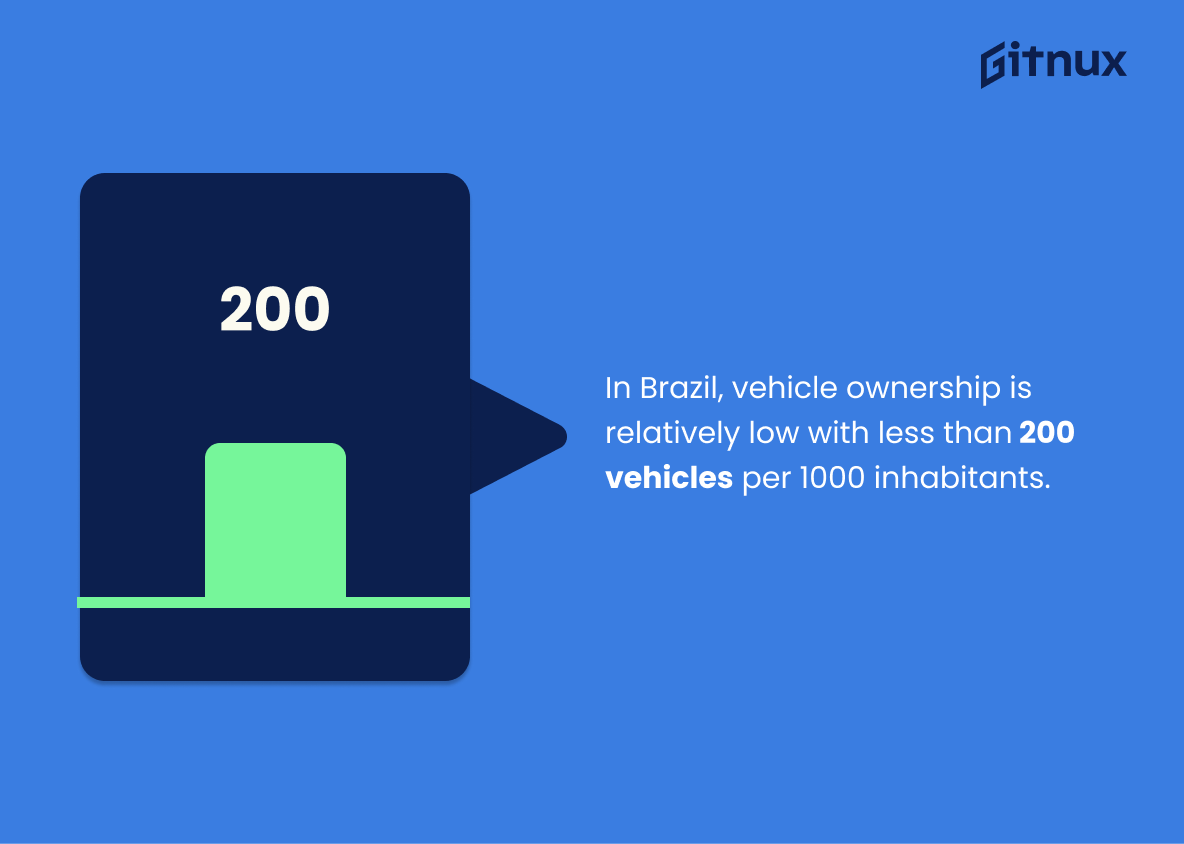The world of automobiles is incredibly diverse and continuously evolving. Between the changes in preferences, trends, and technological developments, car ownership statistics offer a fascinating glimpse into this dynamic landscape. In this insightful blog post, we delve deep into the world of car ownership, highlighting a wealth of informative statistics that reflect our changing relationship with vehicles. From assessing the number of cars per household to identifying top makes and models, and exploring shifts towards eco-friendly options — strap in as we gear up to take you on a journey through the captivating lane of car ownership statistics. It’s more than just numbers; it’s a reflection of our lifestyle, priorities, and the world at large. Buckle up, and let’s drive into the realm of car ownership, where trends, facts, and figures collide.
The Latest Car Ownership Statistics Unveiled
In the United States, there are approximately 266.6 million registered vehicles.
Diving right into the heart of American car ownership, a staggering figure emerges – a colossal fleet of 266.6 million registered vehicles. Now, that’s not just a number, but a testament to the automobile culture that thrives in the corners and corridors of the United States. It portrays an electrifying panorama of highways filled with a diverse range of vehicles, reflecting a story not just about a country moving on wheels, but also about economic growth, personal freedom, and societal progress. Comparing this figure to the population, we realize that there is more than one car for every licensed driver, highlighting how ingrained automobile ownership is in the American lifestyle. It extrapolates fascinating narratives about consumption patterns, societal behavior, and infrastructural demands that would add depth and interest to any discourse on car ownership statistics.
Germany has one of the highest car ownerships in the world, with over 663 vehicles per 1,000 adults.
Highlighting the impressive statistic that Germany boasts over 663 vehicles per 1,000 adults allows us to ascend to the panorama of global car ownership. Occupying such a high position in the world’s ranking, this European powerhouse serves as a captivating example depicting the penetrative reach of cars in a mature, developed economy. Importantly, it underscores the intricate dynamics between prosperity levels, urban planning, and cultural preferences shaping the vehicular landscape. Nestled within this statistic rests a narrative about a nation’s lifestyle, transport infrastructure, and economic prowess – vital elements that bring depth and richness to any discussion around car ownership statistics.
There are about 51 million auto loans in the U.S.
Delving into the vast world of car ownership, the striking number of 51 million auto loans in the U.S sheds significant light on the journey that many Americans take to acquire a vehicle. This noteworthy figure not only paints a vivid picture of how pervasive auto financing is, but also reflects the fueled desire of Americans to own a car, encapsulated in monthly payments and interest rates. Furthermore, it prompts us to examine the economic dynamics at play in the auto industry and the wider consumer marketplace, making the topic far more textured and meaningful to our readers.
The average age of vehicles on U.S. roads is 11.9 years.
Diving into the rich tapestry of Car Ownership Statistics, the stat of 11.9 years as the average age of vehicles on U.S. roads stands out as a notable thread. It gives testament to the longevity of American vehicles, unmasking the durability and enduring performance of our rides. Also, it adds color to the narrative of the motor industry’s evolution in response to consumer habits and economic trends. With cars being a significant investment for most individuals, this statistic speaks volumes about the choices American consumers make- leaning towards vehicles with a longer lifespan. Furthermore, it fuels discussions about environmental aspects, as older cars typically emit more pollutants than newer models. And last, but not least, it sheds light on the potentially higher maintenance and repair costs that come with older vehicles, shaping the landscape of the auto repair industry. All these layers make this single stat a captivating snapshot into the broader story of car ownership in the U.S.
The average car cost in the U.S. reached about $36,800 in 2019.
Deciphering the significance of the average car cost in the U.S hitting around $36,800 in 2019 yields intriguing insights about today’s ubiquitous reality of car ownership. This value serves as an economic indicator, reflecting the evolving market trends, lending patterns, consumer preferences, and the overall health of the automotive industry. Featuring prominently in a blog post about Car Ownership Statistics, this figure helps quantify the financial commitment involved in owning a car, and offers perspective on affordability and expenditures related to car ownership. It’s a complex mosaic of numbers and letters painting a revealing picture of how Americans’ relationship with their cars is inherently tied to their pocketbooks. A high, or increasing, average car cost could suggest growing financial stability, increased manufacturing costs, higher preferences towards luxury or feature-loaded cars, or a mix of these factors. Conversely, a decrease might signal economic stress, saturated markets, aggressive competition, or changing consumer behavior towards cheaper or shared transportation services. In essence, this statistic echoes the economic soundtrack of the auto world, underscoring the tale of car ownership in the U.S. through the lens of cost.
82% of Australian adults have a driver’s license and more than two-thirds own a car.
The depth and appeal of the statement “82% of Australian adults have a driver’s license and more than two-thirds own a car” mirror the rippling effects of Australian car ownership on our blog about Car Ownership Statistics. It presents a vivid landscape of Australians’ engagement with automobiles, acting as the GPS guiding readers through the scenic route of a society married to mobility and a culture that deems car ownership as more than a luxury. Moreover, it constructs a compelling narrative, speaking volumes about the country’s transportation norms, dependence on automobiles, and potentially a reflection on its economic wellness. Injected into our car ownership discourse, the statistic galvanizes understanding, fosters perspective and lends a richer, more textured appreciation for the unfolding narrative.
In Russia, car ownership per 1,000 adults stood at around 382 in 2016.
Unveiling the statistic about Russia’s car ownership – 382 for every 1,000 adults in 2016 – serves to thread together a comprehensive, global picture of car ownership trends in the blog. This nugget of information lends weight to the discussion by presenting a concrete example of vehicle ownership in one of the world’s most expansive countries, offering a riveting waypoint in our exploration of global car ownership standards and behaviors. Balanced against other countries’ data, Russia’s statistic can help to further illustrate disparities or similarities, enriching our understanding and perspective.
China had about 172 million privately owned vehicles in 2018.
Unpacking the mammoth figure of 172 million privately owned vehicles in China in 2018 provides us with a fascinating snapshot of global car ownership trends. Prominently, it cements China’s role as a motor vehicle giant, reflecting not merely the vast size of its population, but also the growing affluence and buying capacity of Chinese consumers. Furthermore, it elucidates the potential for automobile-related businesses, from manufacturers to insurance providers, mapping an enormous and potentially lucrative market. Insightfully, it also provokes wider conversations about the environmental implications of such mass car ownership, suggesting a pressing need for ecological responsibility and innovation. Ultimately, this striking number gives our blog readers an engaging and thought-provoking angle on global car ownership – a journey through the windscreen into economies, societies, and environments.
In 2020, there were 38.641 million registered motor vehicles in the UK.
Highlighting the figure from 2020, with 38.641 million registered motor vehicles in the UK, paints a vivid picture of the vastness of automobile possession in the country. This impressive number not only underscores the prominence of car ownership but indicates a heightened dependency on personal transportation. It serves as a gateway to understanding trends in consumer behavior, automotive industry growth, environmental impacts, and even urban planning needs. This hard data anchors discussions, stimulating dialogue on such topics as market share, popular models, fuel types, and trends over time in a blog post devoted to car ownership statistics.
On average, Canadians keep their vehicles for approximately 6.4 years.
Delving into the average lifespan of vehicle ownership in Canada offers us insightful nuggets of knowledge. This 6.4-year timespan puts into perspective Canadians’ decision-making process, their economic capacity, and the country’s automotive market trends. It whispers tales of both consumer behavior and brand loyalty, creating a foundation for understanding why certain brands succeed in this maple leaf country. This numerical piece of the puzzle, wrapped in a time frame, guides potential car manufacturers in tailoring their marketing strategies and product durability to match Canadian customer habits. Furthermore, it also highlights trends in the second-hand car market, a critical yardstick for calculating resale value, depreciation rates, and the trade-in market’s rhythm. So in the ballet of car ownership, this 6.4-year statistic is the choreographer, leading us through the dance with its significant implications.
Car ownership in India increased from 20 vehicles per 1,000 inhabitants in 2015 to about 27 vehicles in 2020.
Illustrated by the jump from 20 vehicles per 1,000 inhabitants in 2015 to roughly 27 vehicles in 2020, an emerging narrative of rising car ownership has echoed through India’s vibrant streets. This trend is not merely about numbers on a graph; it encapsulates a profound societal shift. The ripple effects of this escalating ownership can thread through various aspects of India’s socio-economy, painting a picture of a nation in transformation and influencing the landscape of the auto industry, consumer spending and urban planning. Hence, it’s crucial to monitor and understand this impressive transportation narrative in our chronicle of Car Ownership Statistics.
American households have an average of 1.88 vehicles.
Delving into the realm of American car ownership, the snapshot of 1.88 vehicles per household is not just a number, but a comprehensive narrative. This intriguing fact underscores a critical thread in the socio-cultural fabric of this nation, driving us towards an understanding of the widespread automobile dependence, making engines virtually the beating hearts of our society. Inferring from this statistic, it’s apparent that for the majority of households, owning just one vehicle may not meet their needs, suggesting the essential nature of cars in our daily lives. This statistic also holds potential implications for industries such as car manufacturing, insurance, and aftermarket services, forming a basis for trend analysis, market predictions, and gauging the impact of external factors like fuel costs or public transportation availability on vehicle ownership. Consequently, this fascinating figure, far from being idle trivia, serves as a cogent point of discourse in a dialogue about car ownership statistics.
In 2020, the average price paid for a new car in the UK was 30,000 pounds.
Peeling back the layers of the 2020 car ownership landscape in the UK, one intriguing number jumps out – £30,000. It’s neither a random figure off the deep end nor a product of sheer guesswork. Rather, it’s the average price tag that clung to new cars bought in the said year. Punctuating the narrative with this fascinating snippet offers more than just a dash of trivia. This numeric detail illuminates the economic commitment that UK consumers were willing and able to make towards vehicle ownership, potentially reflecting the monetary strength of that period.
Moreover, the said figure provides an integral viewpoint to gauge the market dynamics – with manufacturers, dealers, and buyers involved. It could reveal how customer preferences trend towards high-end models, or conversely, imply the rising costs of vehicles. Either way, this number offers a valuable pulse-check of the automotive industry’s health and consumers’ purchasing power, painting a vibrant picture of the nation’s car ownership story in that year.
In Brazil, vehicle ownership is relatively low with less than 200 vehicles per 1000 inhabitants.
Highlighting the low vehicle ownership in Brazil serves as a compelling lens to view and contrast the varying global landscape of automobile possession. The stated figure sets a benchmark which underscores the significant deviations in car ownership patterns worldwide. Placed within the broader narrative of the car ownership statistics blog post, it accentuates the comprehensive understanding of how economic, geographical, and social factors impact vehicle ownership trends differently across various countries. Thus, this statistic potentially triggers riveting discussions and deeper insights about automobile economies, their subsequent environmental impacts, accessibility to other transport infrastructure, and the socio-economic statuses marking distinct regions.
Cuba has one of the lowest car ownership rates in the world at 38 vehicles per 1,000 inhabitants in 2015.
The pulse of Cuba’s car ownership, characterized by a startlingly low rate of 38 vehicles per 1,000 inhabitants in 2015, offers a stark contrast to the global car ownership scene. This striking piece of data undeniably paints a vivid picture of the nation’s unique and intriguing automotive landscape. It aptly punctuates the international statistical conversation on car ownership, thereby making this blog about Car Ownership Statistics richer and more comprehensive. The inclusion of such an extraordinary case study sharpens our understanding of global disparities in car access, and makes one mull over the myriad factors that could be influencing such a drastic deviation from the norm.
In Japan, there are about 591 vehicles per 1000 inhabitants.
Examining the fact that Japan boasts a ratio of 591 vehicles per 1000 residents offers insightful perspectives in a narrative woven around Car Ownership Statistics. It’s akin to peeling back the layers of an exotic fruit. As one of the world’s leading vehicle manufacturers, such a comparison uncovers the depth of car culture in Japan and underscores the significance of personal mobility in Japanese society. This number, cleverly distilled into a ratio, highlights not just the tangible nature of vehicle prevalence, but also cognitive elements like lifestyle preferences, economic power, and transportation choices that Japanese citizens make. It is integral to understand that these are the threads that collectively create the tapestry of worldwide car ownership patterns.
The average age of a Canadian light vehicle in operation was 9.7 years in 2017.
Highlighting the average age of a Canadian light vehicle in operation at 9.7 years in 2017 provides an insightful snapshot into not only the longevity and durability of these vehicles, but also the car ownership trends among Canadians. This key data might resonate with readers by offering a comparative measure for their own vehicle’s age or lifespan, thereby fostering a sense of relevance and enhancing the overall reader engagement of the blog post. Furthermore, it could potentially unveil the consumers’ confidence in the reliability of vehicles over time, their purchasing patterns, their maintenance habits or their access to newer models. It’s a simple figure with profound implications, making it a worthy addition to any discourse about car ownership statistics.
In Italy, there are about 695 cars per 1,000 people.
Painting a vivid picture of car ownership, the fact that Italy boasts approximately 695 cars per 1,000 people underscores the profound role automobiles play in the Italian culture and economy. It adds a mesmerizing stroke to the canvas of global vehicle statistics. Framed within a post focused on Car Ownership Statistics, this little piece of data draws attention to Italy’s specific interaction with cars. Moreover, it serves as a fascinating conversational piece on the broader societal and lifestyle implications—environmental effect, lifestyle preferences, urban design and infrastructure planning, to name a few—while setting the stage for intriguing cross-country comparisons. Imagine, how does Italy’s car-to-person ratio measure up against other nations? Are the Italians more car-centric, or do they simply have a greater access to affordable cars? The answers are a green light traffic signal to a riveting blog post journey.
In Scotland, car ownership is lower than the UK average: only 69% households have access to a car.
Peering through the lens of this intriguing statistic, we uncover a distinct narrative about Scotland’s automobile landscape. Unlike much of the UK, Scotland marches to the beats of its own drum with a noticeably lesser percentage — a mere 69%, of households boasting car ownership. This divergence from the UK average paints an intricate tale of Scotland’s unique societal patterns, transport infrastructure, environmental considerations, or even economic abilities that potentially contribute to this reduced reliance on personal vehicles. It’s a refreshing take on how car ownership is not a ‘one size fits all’ phenomenon across the UK, and provides a fascinating avenue for further dissertion or analysis on regional disparities in car ownership for our readers.
Conclusion
Owning a car brings both unparalleled freedom and financial responsibilities. As we’ve explored in this post, car ownership statistics fluctuate based on factors like geographical region, age, and economy. Understanding the trend within these numbers can help potential buyers make informed decisions. It also helps businesses and stakeholders in the automotive industry to plan and strategize effectively. The fluctuating nature of car ownership statistics will always reflect the societal values and economic circumstances of the times. Thus, staying updated with these statistics provides valuable insights for both individuals and businesses. Keep an eye on the numbers, and drive smartly into the future.
References
0. – https://www.www.transport.gov.scot
1. – https://www.www.acea.be
2. – https://www.www.autoexpress.co.uk
3. – https://www.www.ihs.com
4. – https://www.www.statista.com
5. – https://www.www.desrosiers.ca
6. – https://www.www.debt.org
7. – https://www.www.roymorgan.com
8. – https://www.www.indexmundi.com
